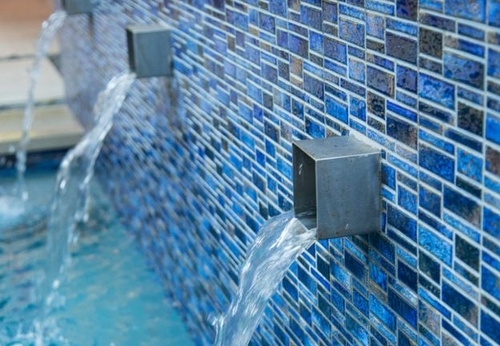spa
In recent years, I've had the good fortune to tackle a number of watershaping projects in the islands off the coast of eastern North America. From the West Indies to the Caribbean, I've learned in pursuing these projects that fresh water and electricity can be amazingly expensive commodities. These are, of course, settings in which numerous clients want to take advantage of water-on-water views. Trouble is, the vanishing edges that achieve these effects are questionable choices where the energy required to run them is costly; where winds and evaporation
Aquatic Technologies Group (Stuart, FL) makes AquaGuard 5000, an epoxy coating designed for restoring the…
As a matter of habit and long practice, my design process for an outdoor environment begins the moment I arrive on site, starting with an assessment of the property's physical qualities. Indeed, before I let structures, features and visual details start dancing in my head, I focus on grading, drainage and basic spatial relationships. In my experience, this overview of the practicalities will help drive the design - and allow the aesthetic decisions to flow smoothly into view at the appropriate time. In the case of the project that's been under discussion through this string of four articles, for example, my early assessment of
Some of our favorite projects have gotten us involved with an unusual class of clients. These folks are affluent enough that they travel extensively and own multiple homes in spots around the world - places they'll stay for stretches ranging from a couple weeks to several months each year. When it comes to developing or remodeling new acquisitions, they'll set some basic ground rules and step back, leaving the specifics to a trusted firm or individual who assembles a hand-picked
Poolside waterfeatures are awesome, says Bruce Riley, filling an area with sound and controlling key views into and out of the yard and around the water. Here's a look at ways to assess what clients need from these details -- and address a few issues they might not anticipate.
This project started in a most unusual way, with the client telling me how little he liked the property he and his wife owned and that a move was likely in the near future. But in the meantime, he said, she wanted a pool. So there I was, sizing up a challenging site and wondering if
Bobé Fire & Water (Phoenix, AZ) makes box scuppers for applications with swimming pools, spas…
Participating in a major project is sometimes like watching a child grow up through various developmental stages: Good things take time! Our own involvement in one of these endurance tests started when we were called out to a 25-year-old home in North Vancouver, British Columbia, Canada: It was being updated from a dreary, dated style to something modern and contemporary for clients who were all about luxury, five-star amenities and state-of-the-art detailing. The architect and the home builder
Most successful designers have a bit of show business in them. Whether you play the sophisticated artiste or radiate a quiet competence, it's all about making a connection with a client who is asking you to participate in a significant project, whatever your personality or approach. I've always wondered how those at the extremes of the personal-style spectrum find work, but the fact of the matter is that all of us, designers and clients alike, are individuals who respond in different ways to different triggers - and I know for a fact that the way I work isn't for everyone simply based on the fact that we don't win every contract we pursue. For all that, however, we at Lorax Design Group (Overland Park, Kans.) have developed our own pattern and have found that it works for us often enough to





















